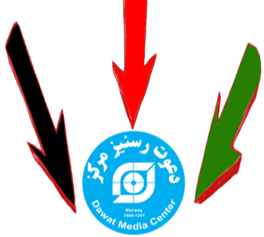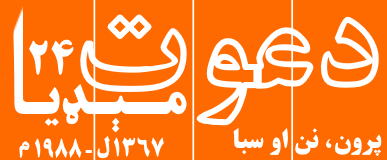Within the intricate tapestry of cultural and national identity, political motives and claims, a meticulous examination of history becomes crucial, particularly when probing into the identity of the esteemed poet, Rumi. Born in Balkh, present-day Afghanistan, and having spent a significant portion of his life in Turkey, the claim that labels him as Persian requires a thorough exploration of historical contexts.
Rumi’s journey commences in 1207 in Balkh, a region untouched by Persian or Iranian influence during his formative years. Scrutinizing historical documents of the region in the documented history of the ancient times, such as Strabo’s world map, provides a vibrant geographical perspective, situating Persia in the west, Ariana in the middle, and India in the east. Ever since, , despite the political border shifts and invasions and occupations, the geographical topology, cultural – language identities, and historical evidence clearly supports the existence of the three distinctive regions of Persia, Aryana and India as originally displayed in the bellow that Strabo had provided centuries ago.
In terms of the language, documented historical accounts demonstrates that the primitive Aryan language had transformed into Dari in the Balkh region far from Persia. Dari flourished and underwent development in the Balkh region. On the other hand, during the Achaemenid and Sassanid rule in Persia to the west, the dominant language was not anything similar to Persian. The ancient inscription at Ctesiphon, known as the Cyrus inscriptions, representing the earliest known instance of the language similar to Persian was only 20%, while the majority of languages used was in Babylonian, and some parts incorporated Kurdish language. Ctesiphon, located in modern-day Iraq, served as the focal point of Sassanid rule, emphasizing the prevalence of Mesopotamian cultural influence. This influence is evident not only in the widespread use of the Aramaic writing system in most inscriptions from the Achaemenid and Sassanid periods but also in various cultural aspects.
The 7th-century Arab invasion and swift occupation of Persia is a crucial historical juncture. Documented history suggests that the rapid Arabization of Persia eradicated the Pahlavi language, which was prevalent in Persia during the 7th century, while the Aryana region, including Rumi’s birthplace, Balkh, resisted the Arab army until the 8th century AD. After the arrival of Arabic language, unlike the Pahlavi language in Persia, the Dari language of Aryana region, which was called Khorasan by Arabs, adapted, resulting in the survival and flourishing of the Dari language. The subsequent centuries, marked by the rule of local Muslim dynasties, specifically the Safarid, Samanid, and Ghaznavid dynasties from the Aryana (Khorasan) region, witnessed the flourishing of the Dari language with the adaptation of Arabic script and alphabet. Historical research based on documented evidence indicate that it was during the rule of these rulers that the Dari language expanded westward towards Persia and gradually with the demise of the Arabic power replaced Arabic. Therefore, the formative years of Rumi was in the cultural and linguistic region of Aryana (Khorasan) far away from Persia where the Dari language was recently expanding and replacing the Arabic, which had eradicated its native Pahlavi language.
Rumi’s journey through the realms of poetry did encompass diverse regions, with Persia being one of them. However, it was in Konya, Turkey, that he chose to settle and weave the fabric of the majority of his timeless works. Masterpieces such as the “Mathnawi” and the “Divan-e Shams-e Tabrizi” were meticulously composed in Dari, his native language, thereby firmly establishing a connection with his cultural roots. The verses intricately reflected his personal linguistic and cultural experiences.
The claim that Rumi is Persian often finds support in historical empires such as the Achaemenid and Sassanid, which had a historical presence in the Balkh region as occupiers for a certain period. However, the nuanced history of Balkh’s occupation under these empires challenges this assertion. Beyond mere occupation, archaeological evidence disrupts the notion that Persian was the official language during the Achaemenid and Sassanid periods, injecting skepticism into the assertion of Rumi’s Persian identity. The dynamic evolution of languages and cultural interplay in the region necessitates a more nuanced understanding of Rumi’s cultural identity.
The assertions regarding Rumi’s Persian identity may draw parallels with the Greek claim that the Macedonian Alexander was Greek. It is well documented that ancient Macedonians did not consider Greeks as kin but rather perceived them as potential threats in close proximity. Conversely, Greeks stereotyped the Macedonians as “barbarians,” subjecting them to biased treatment reserved for non-Greeks. Herodotus, often referred to as the Father of History, recounts an incident involving Alexander I (498-454 BC), a Philhellene denoting a friend of the Greeks and paradoxically, a non-Greek. Alexander aimed to participate in the Olympic Games, yet Greek athletes vehemently objected, refusing to compete alongside a perceived barbarian. Historian Thucydides also labeled the Macedonians as barbarians, a sentiment echoed by Thracymachus, accusing Achelous of being a barbarian enslaving Greeks.
However, it is noteworthy that Alexander, while consistently acknowledging his Macedonian roots and language, embraced Greek and Hellenic culture. In contrast, the situation with Rumi differs, as he never stated that he is Persian. Furthermore, the language in which Rumi created his masterpieces was Dari, a language that was expanded to Persia by Muslim rulers of Aryana-Khorasan, Afghanistan, following the eradication of Persia’s Pahlavi language during the Islamic forces’ invasion. This highlights a distinction between the cultural assimilation of Alexander into Greek and Hellenic culture and the absence of a similar declaration or cultural shift in Rumi’s case.
Furthermore, to claim Rumi’s Persian identity based on the occupation of Balkh by the Achaemenid and Sassanid empires, we can draw a parallel with William Shakespeare. If Rumi is designated as Persian because of the ancient Persian empires’ presence in Balkh, a comparable rationale might categorize Shakespeare as Italian or Roman due to England’s Roman occupation. However, the profound influence of the Romans on England, while substantial, does not necessitate labeling Shakespeare as Roman or Italian.
Analyzing the comparison between Rumi and Shakespeare underscores the intricacies involved in assigning identities based on historical occupations. Although both poets lived in areas shaped by ancient empires, their creations surpass simplistic categorizations. Rumi’s compositions in Dari and Shakespeare’s English masterpieces resonate universally, showcasing the complexities of their unique cultural identities that extend beyond the limitations of historical boundaries.
In conclusion, the exploration of Rumi’s cultural identity, intertwined with the claims of Persian affiliation, unfolds as a nuanced journey through history and diverse regions. Born in Balkh, Rumi’s early years were in a region untouched by Persian influence, and the transformation of the Aryan language into Dari distinguished his cultural roots from traditional Persian categorization. The 7th-century Arab invasion marked a pivotal juncture, with the Aryana region resisting Arabization, ensuring the survival and flourishing of the Dari language.
Parallels with the Greek claim to Alexander’s identity emphasize the complexities of assigning cultural affiliations based on historical occupations. Alexander, while acknowledging his Macedonian roots, embraced Greek culture, contrasting with Rumi, who never explicitly claimed Persian identity and expressed himself through the Dari language.
Furthermore, drawing a parallel with Shakespeare, whose association with Roman occupation doesn’t necessitate labeling him as Roman or Italian, highlights the intricacies involved in attributing identities based on misconceptions of history.
In essence, while we must rejects associations based on historical misconceptions, the examination of Rumi’s cultural identity serves as a reminder of the fluid and dynamic nature of cultural evolution, inviting appreciation for the interconnectedness of human expression across time and space. Rumi’s journey, much like Shakespeare’s, encourages a profound appreciation for the diversity inherent in cultural identities, ultimately enriching our understanding of the universal themes woven into their timeless creations.

د دعوت رسنیز مرکز ملاتړ وکړئ
له موږ سره د مرستې همدا وخت دی. هره مرسته، که لږه وي یا ډیره، زموږ رسنیز کارونه او هڅې پیاوړی کوي، زموږ راتلونکی ساتي او زموږ د لا ښه خدمت زمینه برابروي. د دعوت رسنیز مرکز سره د لږ تر لږه $/10 ډالر یا په ډیرې مرستې کولو ملاتړ وکړئ. دا ستاسو یوازې یوه دقیقه وخت نیسي. او هم کولی شئ هره میاشت له موږ سره منظمه مرسته وکړئ. مننه
د دعوت بانکي پتهDNB Bank AC # 0530 2294668 :
له ناروې بهر د نړیوالو تادیاتو حساب: NO15 0530 2294 668
د ویپس شمېره Vipps: #557320 :
Support Dawat Media Center
If there were ever a time to join us, it is now. Every contribution, however big or small, powers our journalism and sustains our future. Support the Dawat Media Center from as little as $/€10 – it only takes a minute. If you can, please consider supporting us with a regular amount each month. Thank you
DNB Bank AC # 0530 2294668
Account for international payments: NO15 0530 2294 668
Vipps: #557320


Comments are closed.